It seems like the democracy is under ‘constitutional attack’ in the country. As what can be described as the ‘justified act’ by Modi-led NDA government, 66 students were allegedly slapped down with India’s colonial sedition law.
The 66 students, who were allegedly slapped with ‘sedition law’, were not raising the slogans of ‘Bharat tere tukde honge hazar’, or ‘Teri barbaadi tak jung rahegi’, or ‘Kitne Afzal maaroge, ghar-ghar se Afzal niklega’. The students who were booked under sedition charges were holding the protest against the unprecedented fees hike in the university by authorities.
Students, who were holding the protest, were left baffled when the police came rushing in to arrest the students under sedition. Since the time the JNU incident had happened, Modi-led NDA government is redefining the new meaning of sedition.
On looking closely the way sedition law is used, it seems more like the Modi government had found a new tool to crush down all the voices rising against the party. From JNU incident to the latest Punjab University incident, it seems more like a revenge policy that Modi government have under their sleeves all the time.
On analysing the situation further, it seems like the Modi government had only one ground to hold, the ‘Nationlist’ ground. Whenever the ground is shaky, or BJP is losing the ground, they play their ‘Nationalist’ card. These things can be concluded by many of the incidents that followed in the country.
1) JNU incident:
On 9th of February 2016, students from Jawahar Lal Nehru students hold a protest against the capital punishment meted out to the Parliament attack convict Afzal Guru and Kashmiri separatist Maqbool Bhat.
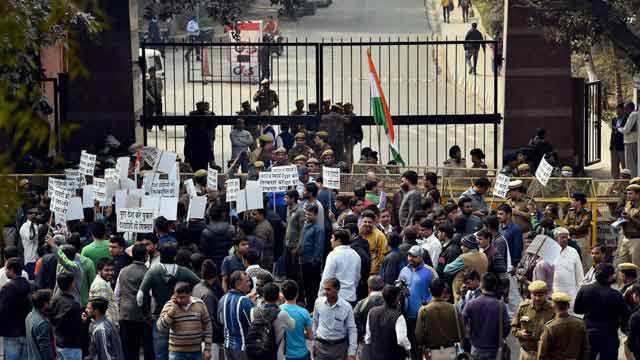
The protest came into light when the ‘Anti-India’ slogans were raised from the outsiders which led to the clash between DSU (Democratic Student’s Union) and Hindu Nationalist party ABVP.
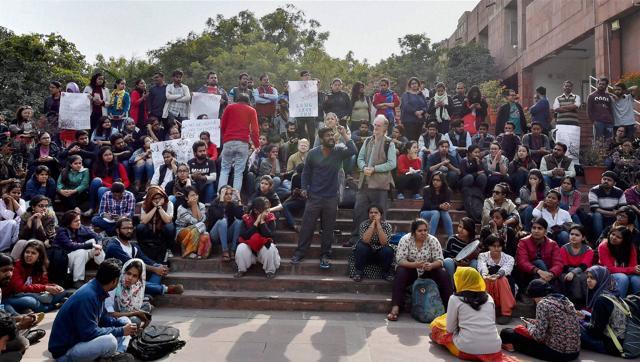
The preliminary investigation shows that the students sloganeering in the video seem to be true to the core. But as the investigation took on, the video which was believed to be true was doctored. Though, the Delhi Police haven’t commented on the issue yet.
But the chance by the BJP to shut down the voices against them by slapping the sedition charges on the students can be seen as silencing the dissent of the people.
2) Ramjas Clash:
A year after the JNU clash, Ramjas College become the new battleground for BJP’s student’s political wing ABVP and AISA students. Umar Khalid, who came into the light during the JNU clash on anti-India sloganeering, was invited to the college to give a seminar on ‘Cultures of Protest’.
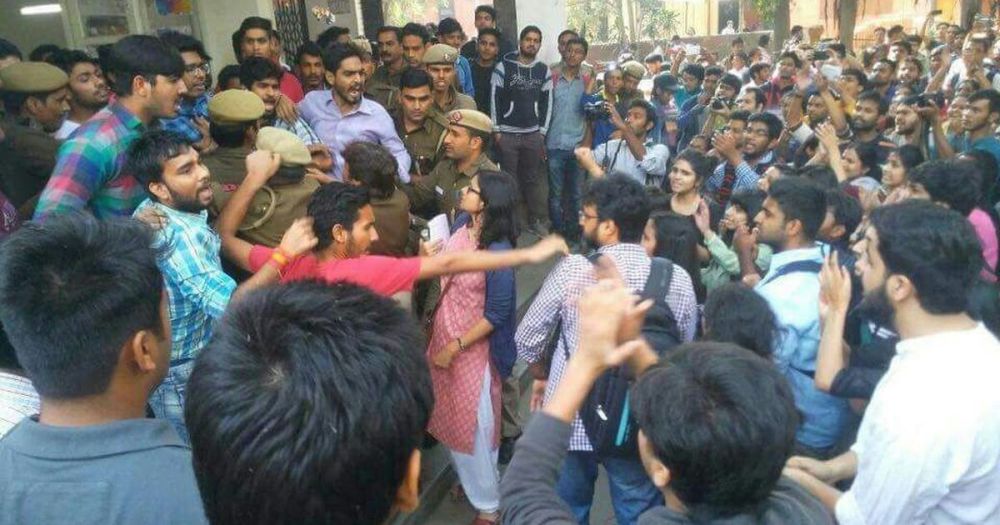
This left the ABVP students baffled and took the violent turn when some of its members allegedly attacked the students who were supporting the seminar.
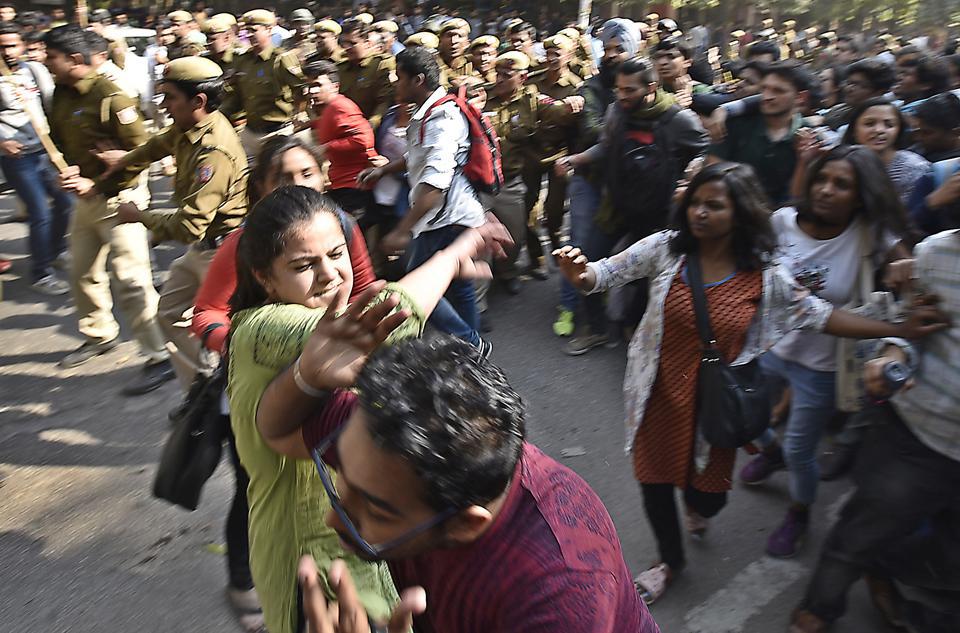
This shook the nation hard as the freedom of speech in the world’s largest democracy was murdered by the very same people who oath-in to protect the same.
3) Gurmehar Kaur:
The noose of ‘Nationalism’ finds its way to this student from Lady Sri Ram College of Delhi University. Gurmehar Kaur took a firm stance on the ‘Goondaism’ and the ‘Hooligaism’ that had erupted at the Ramjas college by calling out all the students from across the nation.
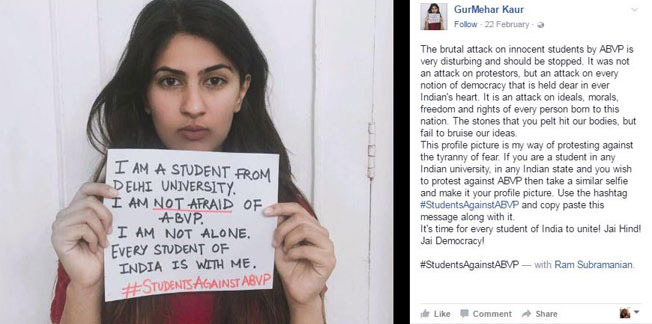
This irked the ABVP and the BJP to the core. The series of comments from the BJP shock the nation and left people divided.

The ‘nationalism’ noose has fallen on the right neck.
These three are just the numbers which have got the media attention. Adding to the list is the name is GN Saibaba, is 90 percent disabled, was allegedly arrested on the grounds of having a Naxalite connection. The police found the Naxalite literature from his house, that made the substantial proof for them to arrest him. The court dismissed the plea saying that “People won’t become Mahatma Gandhi just by reading his book, so how can this be connected with the case”

So, now what actually the sedition really means? Here’s what it means:
- Section 124-A of the Indian Penal Code, named ‘Sedition’, explains sedition in wide and magnanimous terms
- It says ‘Whoever, by words, either spoken or written, or by signs, or by visible representation, or otherwise, brings or attempts to bring into hatred or contempt, or excites or attempts to excite disaffection towards the Government established by law in India’ shall be punished with life imprisonment
- The explanations which the Indian Penal Code gives are that ‘the expression ‘disaffection’ includes disloyalty and all feelings of hate
- It also says that comments that express strong disapproval of ‘the measures of the Government, with a view to obtaining their desired modifications by lawful means, without exciting or attempting to excite hatred, contempt or disaffection, do not constitute an offence under this section.’
- According to the section 124-A, comments expressing strong disapproval of the ‘administrative or other action of the Government without exciting or attempting to excite hatred, contempt or disaffection, do not constitute an offence under this section.’
- The law was originally drafted by Thomas Macaulay
- It was not a part of IPC in the 1860s and was even dropped from the law. It was introduced in the IPC in the year 1870
- Many Indian freedom fighters, including Mahatma Gandhi and Bal Gangadhar Tilak, were charged with sedition during freedom struggle
- When the first amendment was introduced, which also included detailed limitations on free speech, the then Prime Minister Jawaharlal Nehru was categorical in his belief that the offence of sedition was fundamentally unconstitutional. He had said ‘now so far as I am concerned [Section 124-A] is highly objectionable and obnoxious and it should have no place both for practical and historical reasons. The sooner we get rid of it the better.’
- Besides Kanhaiya Kumar, Patidar leader Hardik Patel was slapped with sedition charges
- In the year 2014, some of the Kashmiri students were charged with sedition for supporting Pakistan in a cricket match between India and Pakistan.
SEDITION: A New Tool To Break Down The ‘Free Voice’ Of India





